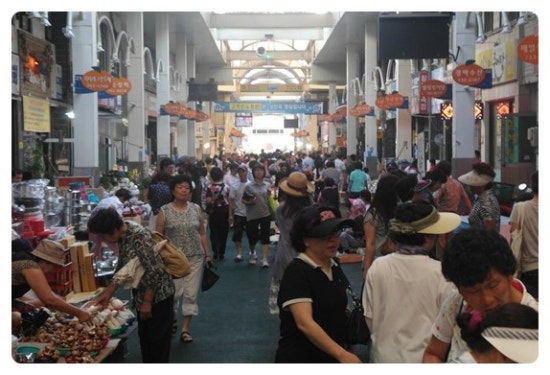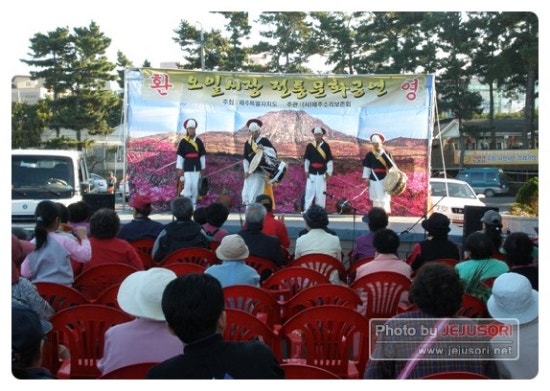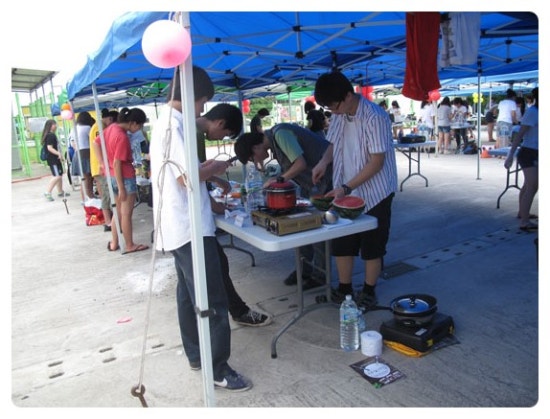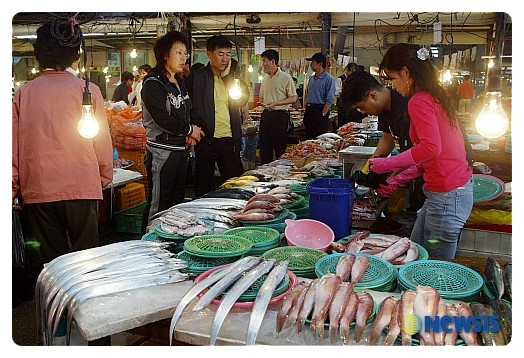A Five-Day Market in Jeju
We can figure out culture and customs in traditional markets. I’d like to introduce you a five-day market in Jeju island which presents its own culture and customs.
A five-day market opens five days in a row per month, however, just 40 and 50 years ago, it was nothing but a normal market crowded with people. As time goes by, the market has modernized, but unfortunately nine markets remained so far.
A Five-Day Market in Jeju, History and Tradition

<Maeil Olleh market in Seogypo> (Source: Jeju Sori)
It is not clear from when the five-day market started in Jeju. Academic circles estimate the market started at front yard of Gwandeokjeon in 1910. According to the record, it opened every second and seventh day in lunar calendar. Many items such as crops, clothes and daily necessity were sold or bartered for.
Jeju five-day market has been a driving force to Jeju people and contributed to regional economic growth. The natives say that the biggest markets were the ones that opened near Tapdong and Yongdam. Also, it is said that many people were competitive to get a nice place to sell their items.

(Source: Jeju Sori)
The market is not only for selling and buying products but for communicating with people in town. Every market has its own characteristics. For example, some deal with seafood, others deal with farm products. Currently, it has been modernized and improved for consumers, and delivery and customer call service became common as well. It also has a quality guarantee service. They even provide the arcade for children, stroller, and cart to young mothers to make them feel comfortable while shopping.
Transformed into Cultural Tourism Market

<10,000 won Cuisine Event held in five-day market in Seogypo> (Source: E2news)
Now, the five-day market became very popular with other tourist attractions in Jeju, such as ‘Olleh’ roads. As an effort to boost the economy, Seogypo market changed its name into ‘Olleh’, after then, even people from other local markets visit there for benchmarking.
Actually, Seogypo market was in depression but the atmosphere has been revived since it connected the tour business with the sixth course of Olleh. Moreover, promotion effect has been doubled after the Smalland Medium Business Administration and Market Promotion Center chose the market as one of the “50 traditional markets to go”.
According to Jeju government, the number of visitors per day increased 8,000 from 6,000. Daily sale went up to 80 million won, increasing by 20 million won. Jeju seller association has already registeredMaeil Olleh market as the trademark. With this effort, over 2,000 Olleh hikers visited to the market, which is twice as higher than that of last year.
More than 1,000 government officials and merchants have visited to benchmark Olleh market from all across the country. More Olleh hikers have come to Dongmun market as it became the 18th course of Olleh. Hanlim maeil market is connected to 14th course of Olleh, and Daejung five-day market is connected to 11th course of Olleh. Seogypo Maeil market is designated as the cultural tourism market of the year 2010 and 2011. Seomun market will soon plan to develop other Ollehcourses.

(Source : Newsis)
Meanwhile, a person concerned to the market said that DID (Digital Information Display) will be installed in sixth course of Olleh in order to provide information of food, products, hot sale events in Jeju to all visitors. They expect many of them will come to markets as well.
So, if you want to feel 100% of the culture and custom of Jeju, this is the best season. Don’t forget to bring camera!







No comments:
Post a Comment